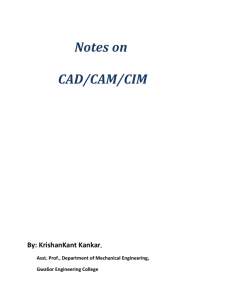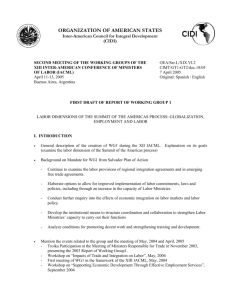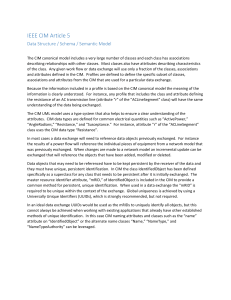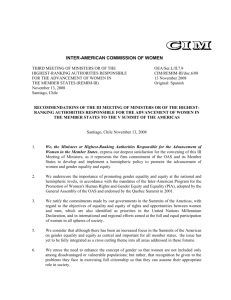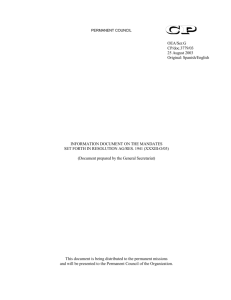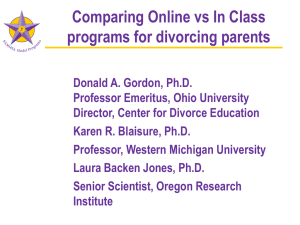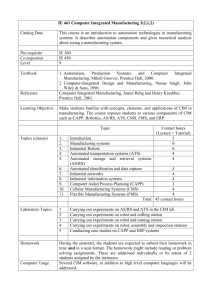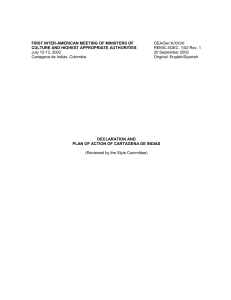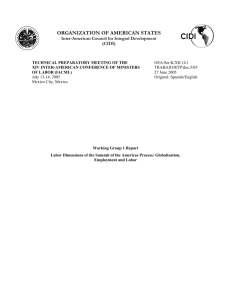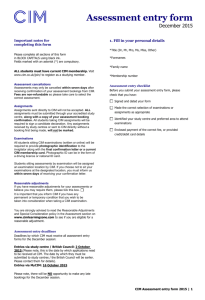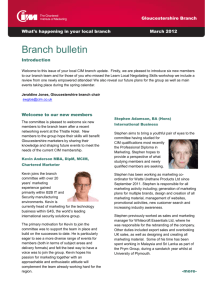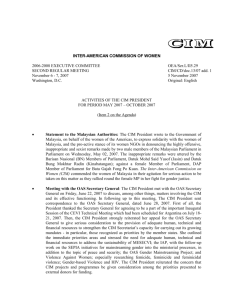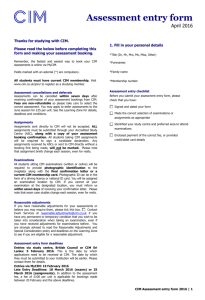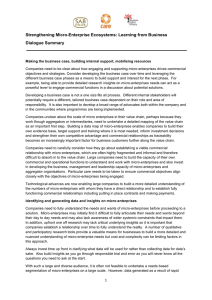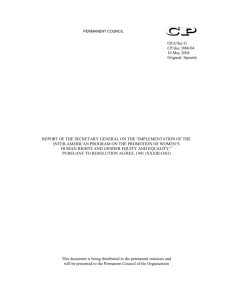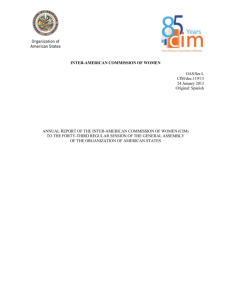OEA/Ser - Organization of American States
advertisement
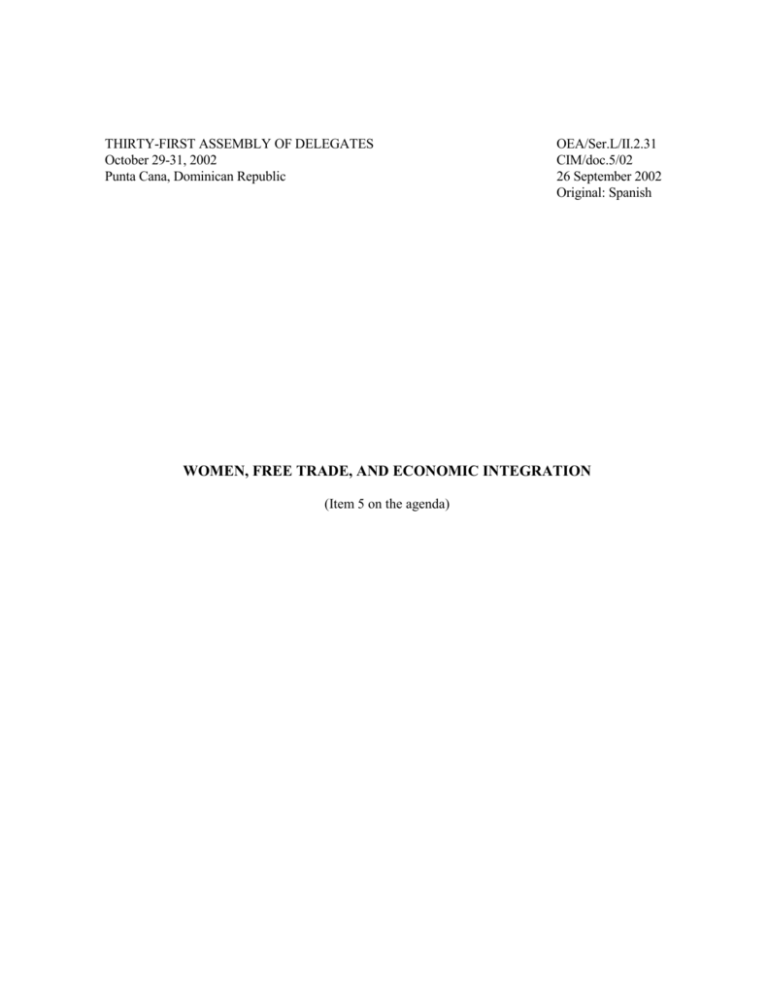
THIRTY-FIRST ASSEMBLY OF DELEGATES October 29-31, 2002 Punta Cana, Dominican Republic OEA/Ser.L/II.2.31 CIM/doc.5/02 26 September 2002 Original: Spanish WOMEN, FREE TRADE, AND ECONOMIC INTEGRATION (Item 5 on the agenda) WOMEN, FREE TRADE, AND ECONOMIC INTEGRATION1/ I. INTRODUCTION Job markets in the region are undergoing a series of changes associated with new measures for inserting economies into the integration process and, as a result, with the search for competitiveness through cheaper labor costs and the introduction of technological change. This has affected large sectors of urban workers and has detracted from the quality of employment owing to increased underemployment and the precarious nature of employment (job instability, absence of social security coverage). Globalization and the internationalization of the economies of the countries of the Hemisphere may become an opportunity for women to achieve more equitable insertion, as long as the countries’ policies do not restrict their efforts to apply specific measures in favor of women but rather mobilize actions aimed at bringing about equality in all general policies. Ultimately, this entails fostering a genuine desire to promote equal opportunity for women and men across the board in the economic, labor, political, and cultural spheres, extending even into family matters. It is therefore urgent to examine the mechanisms and strategies for providing women with alternatives for becoming part of the new picture so that they may have access on an equal footing to economic resources and be competitive in productive and service activities as well as in their individual and family spheres. According to the recommendations presented by the CIM to the Twelfth Inter-American Conference of Ministers of Labor (XII CIMT), women currently represent 40% of the economically active population in Latin America and their participation in the labor market increased considerably as a result, inter alia, of the increase in their levels of education. However, there are still major problems in the way in which women enter the labor market and sharp inequalities compared with men. In Latin America, on average, women’s earnings continue to be between 60% and 70% of men’s. Women with little schooling are increasingly becoming self-employed or finding work in micro-enterprises in the informal sectors or they hold unregulated, non-union, and poorly paid jobs in the flourishing export sector. Every day, a majority of entrepreneurial or micro-entrepreneurial women face the consequences of at least one of the following obstacles: 1. access to commercial financing access to markets access to information access to training access to policy designers This document was prepared in collaboration with the Argentine delegation. -2- II. INTERNATIONAL COMMITMENTS Economic theories and conventional macroeconomic and integration policies have not incorporated the gender perspective. What is needed then is the implementation of new sustainable trade policies to offset gender inequality and allow women and men to partake equally of the benefits of economic growth. The Fourth World Conference on Women (1995) focused its attention, among other areas, on economic resources and employment, as a basis for development with equity, and recommended the following: Promotion of women's economic rights and independence, including access to employment, appropriate working conditions, and control over economic resources; Facilitation of women’s equal access to resources, employment, markets, and trade Provision of business services, training, and access to markets, information, and technology, particularly to low-income women; Strengthening of women's economic capacity and commercial networks; Elimination of occupational segregation and all forms of employment discrimination; Promotion of harmonization of work and family responsibilities for women and men. For its part, the Inter-American Program for the Promotion of the Human Rights of Women and Gender Equity and Equality (PIA), adopted by the OAS General Assembly in June 2000, recommends to governments that they promote policies designed to ensure equal pay for equal work by women and men, as well as equal pay for work of equal value, and that they ensure women’s equal access to employment and productive resources, such as credit and land. Similarly, the Plan of Action of the Third Summit of the Americas expresses support for the PIA and, in chapter 15, Gender Equality, recognizes that “women's empowerment, their full and equal participation in the development of our societies, and their equal opportunities to exercise leadership are all central to the reduction of poverty, the promotion of economic and social prosperity, people-centered sustainable development . . . further recognizing that these principles are the basis for promoting gender equality and women's human rights in the Americas and working towards the elimination of the full range of inequalities.” But, despite the incorporation of more women into the labor force, their participation in different areas of economic and social life, and a heightened awareness of the need for equal rights and nondiscrimination, all of which proceeded from international meetings, the full access of women and men to economic, social, and cultural rights is still an unfinished task. The necessary insertion of women into the economy and business has advanced very little and is one of the emerging issues of the day. Their absence is also apparent in international relations and, in particular, in trade negotiations. -3- To fully understand the impact of trade policies broken down by gender, an analysis must be made of how inequities in employment, positions of power, and access to markets for credit and goods affect the opportunities afforded to women to benefit from trade liberalization and how gender inequities affect changes in trade as a whole. The plethora of questions on the impact of the trends on our economies and on employment and the female labor force calls for a new awareness of the problem and a recognition of cases of discrimination against women in order to promote appropriate strategies for solving them. III. PROPOSAL In this context, the following proposal is hereby presented to the CIM Assembly of Delegates: To establish a Women’s Group for Economic Participation and Integration under the regional integration and trade agreements of the Hemisphere. This proposal is similar to what has been done in MERCOSUR (Specialized Meeting for Women, REM) but is concentrated on women and the economy. It will have the following objectives: o In coordination with the CIM, to incorporate the gender perspective into actions, declarations, and agendas of meetings of the regional blocs at the ministerial level, following up on the negotiation process for hemispheric integration agreements. o To disseminate the results so as to increase awareness of the impact of regional integration on women’s participation in large, medium-sized, and small enterprises, and on women’s employment in the formal and informal sectors of the national and regional economy. o To propose, within the framework of the Trade Forum of the Americas, strategies and policies designed to promote gender equality in the entrepreneurial sector, support micro-enterprises headed by women, and reduce the obstacles that women entrepreneurs face in fully carrying out their activities. o To establish a cooperation and coordination network among the Women’s Groups for Economic Participation and Integration of all the regional agreements of the Hemisphere (NAFTA, MERCOSUR, Andean Group, etc.). The following results are anticipated: Generation, in the integration agreements of the Americas, of a separate space for deliberation, critical action, political analysis, and monitoring to change the status of -4- IV. women entrepreneurs, favor their advocacy in the area of integration and free trade, and draw attention to the situation of discrimination against women. To promote statistics and studies on the impact of free trade and economic integration on women so as to create an opportunity for analysis of the socioeconomic effects of integration agreements, with special emphasis on the living conditions of women, and information on and increased awareness of the respective populations and, more specifically, women. As part of its work, the Women’s Group for Economic Participation and Integration should establish a register of commitments to be filled out once a year, in other words, a tool for monitoring and political negotiation to follow up on proposals made and regional resolutions emanating from those proposals. MEANS OF IMPLEMENTATION To implement the proposal, the following suggestion is made: That the CIM delegates from each regional agreement (it could be the delegate from the country serving as chair pro tempore of the agreement) endeavor to have the Women’s Group for Economic Participation and Integration recognized as an additional organ of the bloc, with consultative status, and, thus be able to participate in negotiating agreements; in bodies in which they are ratified; in committees that monitor their implementation; and in negotiations on laws affecting them. ADdoc-5.ing CIM01076E04



